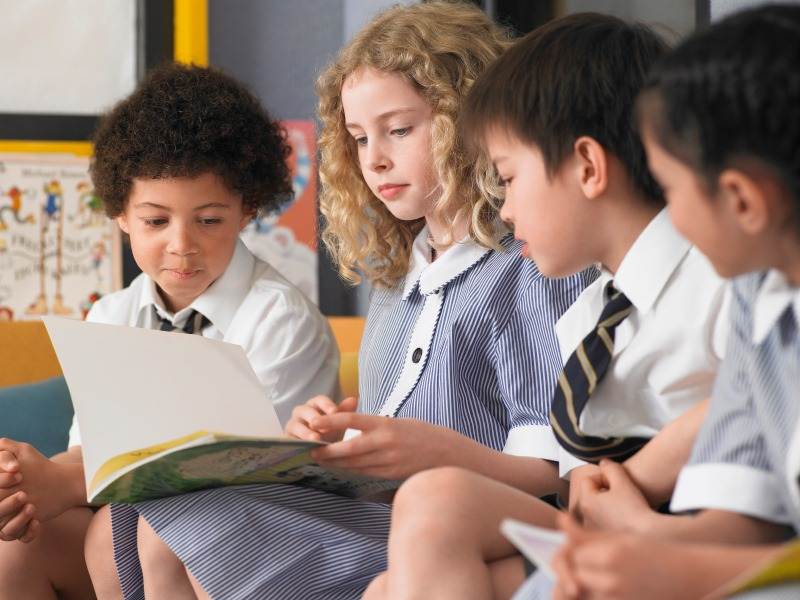Doing the rounds of picnics, kids’ birthdays, dinner parties and the like, you might have noticed that children’s education has become the topic du jour, even nudging out house prices as a natural conversation piece. But while we can all agree that houses are expensive regardless of where you are looking, the debate about children’s education – in particular the relative merits of the public and private systems -is less settled.
In the current climate, the decision parents make about where to send their kids to school seems to be a profound personal, even political statement. Education has become a sensitive issue for our politicians and an emotive and confusing subject for parents and voters.
We have just conducted a major survey for Per Capita including 1,030 respondents in a nationally representative sample into attitudes towards public and private education, and our results reflect this confusion. While the trend is towards investment in private education, Australians remain ambivalent about whether private schooling is the key to success in later life.
More than half of all respondents in our survey expressed that they did not think that the source of education impacted individuals’ career success. Only three in 10 respondents expressed that they thought that children who attend public schools are less successful that those who attend private schools.
While the research shows that positive attitudes to public education are present in the community, they can be overshadowed by concerns about the public system. Whether or not these concerns are founded in fact, they include concerns around poor teacher quality, lack of discipline, lack of facilities and lack of support for students who are struggling either academically or socially. There is a strong perception that the public system is less responsive to the needs of individual kids and families. The view is that if you are paying a direct fee to a private school, they have to treat you like a valued customer.
Why is there such a growing anxiety amongst Australian parents about where and how to school their children? Are we more nervous about our children’s success than parents in other countries? Is the Australian economy so difficult to predict that it means that unless our kids are in the right pre-school, they are not going to get a job?
The answer appears, at least in part, to be explained by the fact that unlike other parents across the OECD, we have genuine schooling choice in Australia. And like all choices that need to be made, the very processes of decision-making can cause considerable anxiety and stress. The research shows that negative perceptions about the public system are causing some anxious parents to opt out all together before they even test the system to see if it suits their needs. Others are assuming that while public primary school will suit their kids, public high school is not an option because that’s when schooling gets serious. Among those parents without the means to send their kids to a private school, there is still the view that the private system offers a better standard of education. There is no doubt that public education is more affordable. It is free to attend and you are guaranteed by law a place at your local comprehensive school. However, this is clearly not enough. To keep anxious and time-poor parents committed to the public system they need to be confident that the system will deliver for their kids, educationally, culturally and socially.
Public education needs to be great. If public schools are great schools, people will stay. And most public schools are already great, delivering life-changing education to a diverse group of students every day. But, like their non-government counterparts, not all public schools are great.
And this is the problem, because the solution is a circular one. If anxious parents take their kids out of the local school, it starts to do worse, forcing more worried families to depart. New families then bypass the local school altogether, either sending their children to an out of area government school or to non-government options. But, the local school will only improve if these families stay and new families join the school. There is some recognition among the public that with parents pulling their kids out of the public system, that system suffers. If enough parents persisted with the public system to improve it, then the benefits would flow.
As one mother of primary school aged kids put it succinctly: “If we all send our kids to the local state high school, that will change it, make it good.”
This is why a needs-based funding system – Gonski or otherwise – is so crucial. We need to ensure the full package of promised funding is delivered over six years, not just one-third of the amount the federal government is currently guaranteeing. The allocation should be needs-based, so the money goes where it is most needed, perhaps with some spending autonomy for principals and parents at those schools. It’s critical though that funding attaches to the schools, and can’t be transferred away. For parents who live in areas where the local public schools are struggling, a serious injection of funding will do much to restore trust and hope that their needs can be met.
Confidence begets confidence and keeping parents engaged and committed to the public education system is a two way street. Fair, transparent and needs based funding is a vital first step.

